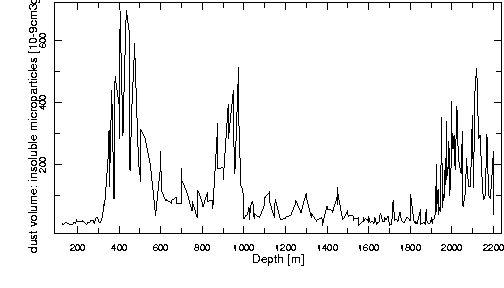The amount of dust that deposited on the ice caps during the last Ice Age was about 30 times that of our present atmospheric concentrations. This has been demonstrated by ice cores drilled in the Antarctic and Greenland ice caps (Fig 1). In part, this extra dust may be the result of stronger winds picking up the denuded soil in periglacial areas. However, there were also four times more marine aerosols present in the Greenland ice cores of 20kBP, even though the ocean area was slightly reduced because of a lower sea level.
Yung et al (1) use a GCM to show that the difference between aerosol deposition rates now and then is due to less global mean precipitation during the Ice Age. A model run based on half the current washout rate (i.e. a less intense hydrological cycle) yielded five times the rates of dust deposition in polar regions. Under current conditions, less aerosol reaches the Greenland ice cap because more aerosol is scavenged by clouds and falling precipitation.
In short, during the last Ice Age the global mean precipitation was significantly less, and the hydrological cycle slower.

Fig 1. Dust concentration in an ice core drilled on the east Antarctic ice shield at Vostok. The amount of dust is expressed as 10-3 mm3 of insoluble dust volume per kg of ice. The last Ice Age ended about 18,000 yBP, which is at a depth of 300m. The previous interglacial (100-125kBP) is at a depth of about 1,500-1,900m. (Source: International Research Institute for climate prediction, Lamont-Doherty Earth Observatory, Columbia University)